New Evidence on the Distribution of the Highly Endangered Natrix natrix cypriaca and Implications for Its Conservation
Abstract
Simple Summary
Abstract
1. Introduction
2. Materials and Methods
- (a)
- Field work preparation: Preliminary work was conducted using Google Earth to get familiar with the area, the streams and the road network providing access near them. The streams to be visited were surveyed in detail (150–200 m eye altitude) following the water course. Possible access points were marked, and every site was given a code indicating the section of the stream (e.g., A, B, C) and the serial number along the water course (e.g., 01, 02, 03). We tried to identify at least one access point at every few hundred meters (200–500m), while in cases of uncertainty, multiple possible access points were marked.
- (b)
- Field survey: Each site was visited only once, using a car or by foot in the absence of nearby roads. When access was not possible, due to parameters not identified while using Google Earth (e.g., cliffs, dense bushes), the team moved to the next site. When successfully reaching a site, a rapid evaluation (10–15 min) of the riparian habitat was conducted using a standardised protocol (Supplementary Materials) and numerous photos were taken.
- (c)
- Habitat suitability assessment: The habitat of each site and its suitability for N. n. cypriaca was characterised as “Good”, “Medium” or “Bad” (Figure 2), based on bibliographic information [1,3,4] and expert judgment. This was not a thorough assessment but meant to assist in choosing the more promising sites for conducting the transect line surveys.
- (d)
- Transect line survey: Sites whose habitat was characterised as “Good” were revisited at least once by the team and transect line surveys were conducted. The distance of each transect was based on the characteristics of the stream section and its accessibility while the survey usually lasted a few hours per site. During the survey, streams and adjacent vegetation were investigated by foot looking for the presence of individuals of N. n. cypriaca. In the case of sightings, snakes were captured, measured, weighted and photographed. Their colour morph and possible marks were noted, and the exact location was recorded using a GPS device. Snakes were released exactly where they were caught. In case of finding a shed skin, the skin was closely observed and if attributed without doubt to N. n. cypriaca it was considered as an indication of its presence in the site. Note that in Cyprus only grass snakes and vipers have keeled scales, which makes this kind of identification, provided the shed is in a good condition, easy for experts.
3. Results
4. Discussion
- (A)
- Construction of small artificial water bodies using gabions.
- (B)
- Boundary adaptations and inclusions of protected sites.
5. Conclusions
Supplementary Materials
Author Contributions
Funding
Institutional Review Board Statement
Data Availability Statement
Acknowledgments
Conflicts of Interest
References
- Blosat, B. Morphologie, Aut- und Populationsökologie einer Reliktpopulation der Zypriotischen Ringelnatter, Natrix Natrix Cypriaca (Hecht, 1930); University of Bonn: Bonn, Germany, 1998. [Google Scholar]
- Wiedl, H.; Böhme, W. Wiederentdeckung der Ringelnatter (Natrix natrix ssp.?) auf Zypern—Vorläufiger Bericht. Herpetofauna 1992, 14, 6–10. [Google Scholar]
- Baier, F.; Sparrow, D.; Wiedl, H.-J. The Amphibians and Reptiles of Cyprus; Edition Chimaira: Frankfurt, Germany, 2009; ISBN 978-3-89973-476-8. [Google Scholar]
- Böhme, W.; Wiedl, H. Status and zoogeography of the herpetofauna of cyprus, with taxonomic and natural history notes on selected species (genera rana, coluber, natrix, vipera). Zool. Middle East 1994, 10, 31–52. [Google Scholar] [CrossRef]
- Unger, F.; Kotschy, T. Die insel Cypern, ihrer Physischen und Organischen Natur nach mit Rücksicht auf ihre Frühere Geschichte; Wilhelm Braumüller: Wien, Austria, 1865. [Google Scholar]
- Hecht, G. Systematik, Ausbreitungsgeschichte und Oekologie der europaischen Arten der Gattung Tropidonotus (Kuhl) H. Boie. Mitt. Zool. Mus. Berlin 1930, 16, 244–393. [Google Scholar]
- Demetropoulos, A.; Lambert, M. Herpetology in Cyprus. Br. Herpetol. Soc. Bull. 1986, 17, 22–27. [Google Scholar]
- Schmidtler, J.F. Zur Bestandssituation der Amphibien und hydrophilen Reptilien auf der Insel Zypern. Salamandra 1984, 29, 43–49. [Google Scholar]
- Osenegg, K. Die Amphibien und Reptilien der Insel Zypern; University of Bonn: Bonn, Germany, 1989. [Google Scholar]
- Blosat, B. Establishing a Captive-Breeding Program for the Endangered Cypriot Grass Snake (Natrix Natrix Cypriaca)—Final Report; Department of Fisheries and Marine Research, Ministry of Agriculture, Natural Resources and Environment: Nicosia, Cyprus, 2005. [Google Scholar]
- Blosat, B. Population status, threats and protection of the Grass Snake, Natrix natrix cypriaca (Hecht, 1930) on Cyprus. Mertensiella 2008, 17, 246–271. [Google Scholar]
- Blosat, B. Study for the Conservation and Protection of the Cypriot Grass Snake (Natrix Natrix Cypriaca)—Final Report; Department of Fisheries and Marine Research, Ministry of Agriculture, Natural Resources and Environment: Nicosia, Cyprus, 2002. [Google Scholar]
- Baier, F.; Wiedl, H.-J. The re-evaluated conservation status of the mountain populations of the highly endangered Cyprus grass snake, Natrix natrix cypriaca (Hecht, 1930), with miscellaneous natural history notes. Salamandra 2010, 46, 16–23. [Google Scholar]
- IUCN. IUCN Red List of Threatened Species. Available online: www.iucnredlist.org (accessed on 28 February 2020).
- IUCN. European Red List of Reptiles. Grass Snake (Natrix Natrix); IUCN: Grand, Switzerland, 2009. [Google Scholar]
- Pokrant, F.; Kindler, C.; Ivanov, M.; Cheylan, M.; Geniez, P.; Böhme, W.; Fritz, U. Integrative taxonomy provides evidence for the species status of the Ibero-Maghrebian grass snake Natrix astreptophora. Biol. J. Linn. Soc. 2016, 118, 873–888. [Google Scholar] [CrossRef]
- Kindler, C.; Chèvre, M.; Ursenbacher, S.; Böhme, W.; Hille, A.; Jablonski, D.; Vamberger, M.; Fritz, U. Hybridization patterns in two contact zones of grass snakes reveal a new Central European snake species. Sci. Rep. 2017, 7, 7378. [Google Scholar] [CrossRef] [PubMed]
- European Environment Agency (EEA). Report on Natrix Natrix Cypriaca (Hecht, 1930). Available online: https://eunis.eea.europa.eu/species/196437 (accessed on 28 February 2020).
- EIONET. Central Data Repository Article 17 Reporting 2013–2018. Available online: https://cdr.eionet.europa.eu/cy/eu/art17/envxw_f9q/ (accessed on 28 February 2020).
- Bucknill, J.A.S.; Boulenger, G.A. List of the Reptilia and Batrachians of Cyprus. In The Handbook of Cyprus; Lukach, H.C., Jardine, D.J., Eds.; Edward Stanford: London, UK, 1913; pp. 245–248. [Google Scholar]
- Cecconi, G. Rettili ed anfibi raccolti nell’isola di Cipro. Boll. Della Soc. Rom. Per. Gri Stud. Zool. 1899, 8, 152–155. [Google Scholar]
- Natural History Museum of Crete. Final Assessment of Conservation Status of the Targeted Species (Second Deliverable A1); Natural History Museum of Crete: Heraclio, Greece, 2012. [Google Scholar]
- Natural History Museum of Crete. Final Report for the Results of the Conservation Genetics in the Context of Action C8.1; Natural History Museum of Crete: Heraclio, Greece, 2013. [Google Scholar]
- Salvador, A. Reptiles. Fauna Ibérica; Museo Nacional de Ciencias Naturales-CSIC: Madrid, Spain, 1998; Volume 10. [Google Scholar]
- Escoriza, D.; Hassine, J. Ben Niche separation among north-west African semi-aquatic reptiles. Hydrobiologia 2017, 797, 47–56. [Google Scholar] [CrossRef]
- Escoriza, D. Patterns of occurrence of semi-aquatic reptiles in highly invaded Mediterranean rivers. NeoBiota 2018, 35, 23–35. [Google Scholar] [CrossRef]
- Department of Environment, Ministry of Agriculture Natural Resources and Environment. Improving the Conservation Status of Fauna Species in CYPRUS: From Microhabitat Restoration to Landscape Connectivity; Final Report; Department of Environment, Ministry of Agriculture, Natural Resources and Environment: Nicosia, Cyprus, 2014. [Google Scholar]
- Baier, F.; Nicolaou, H.; Rödder, D. A species distribution model for the endemic Cyprus whip snake (Hierophis cypriensis) is consistent with a transient period of isolated evolution in the Troodos Range. Herpetol. J. 2014, 24, 175–181. [Google Scholar]
- Spear, S.F.; Groves, J.D.; Williams, L.A.; Waits, L.P. Using environmental DNA methods to improve detectability in a hellbender (Cryptobranchus alleganiensis) monitoring program. Biol. Conserv. 2015, 183, 38–45. [Google Scholar] [CrossRef]
- Ratsch, R.; Kingsbury, B.A.; Jordan, M.A. Exploration of environmental dna (EDNA) to detect kirtland’s snake (clonophis kirtlandii). Animals 2020, 10, 1057. [Google Scholar] [CrossRef] [PubMed]
- Courtice, G.; Baki, A.B.M.; Zhu, D.Z.; Cahill, C.; Tonn, W.M. Stream modifications to enhance system connectivity for fish habitat compensation: A case study in the Barrenlands region of Canada. Can. J. Civ. Eng. 2014, 41. [Google Scholar] [CrossRef]
- Thompson, D.M.; Puklin, L.S.; Marshall, A.E. The long-term impact of channel stabilization using gabion structures on Zealand River, New Hampshire. Ecol. Eng. 2016, 95. [Google Scholar] [CrossRef]
- Fandel, C.A. The Effect of Gabion Construction on Infiltration in Ephemeral Streams; The University of Arizona: Tucson, AZ, USA, 2016. [Google Scholar]
- Norman, L.M. Ecosystem Services of Riparian Restoration: A Review of Rock Detention Structures in the Madrean Archipelago Ecoregion. Air Soil Water Res. 2020, 13. [Google Scholar] [CrossRef]
- Biggs, J.; von Fumetti, S.; Kelly-Quinn, M. The importance of small waterbodies for biodiversity and ecosystem services: Implications for policy makers. Hydrobiologia 2017, 793. [Google Scholar] [CrossRef]
- Céréghino, R.; Biggs, J.; Oertli, B.; Declerck, S. The ecology of European ponds: Defining the characteristics of a neglected freshwater habitat. Hydrobiologia 2008, 597, 1–6. [Google Scholar] [CrossRef]
- Kukkala, A.S.; Arponen, A.; Maiorano, L.; Moilanen, A.; Thuiller, W.; Toivonen, T.; Zupan, L.; Brotons, L.; Cabeza, M. Matches and mismatches between national and EU-wide priorities: Examining the Natura 2000 network in vertebrate species conservation. Biol. Conserv. 2016, 198, 193–201. [Google Scholar] [CrossRef]
- Donald, P.F.; Sanderson, F.J.; Burfield, I.J.; Bierman, S.M.; Gregory, R.D.; Waliczky, Z. International Conservation Policy Delivers Benefits for Birds in Europe. Science 2007, 317, 810–813. [Google Scholar] [CrossRef] [PubMed]
- Campagnaro, T.; Sitzia, T.; Bridgewater, P.; Evans, D.; Ellis, E.C. Half Earth or Whole Earth: What Can Natura 2000 Teach Us? Bioscience 2019, 69, 117–124. [Google Scholar] [CrossRef]
- Trochet, A.; Schmeller, D.S. Effectiveness of the Natura 2000 network to cover threatened species. Nat. Conserv. 2013, 4, 35–53. [Google Scholar] [CrossRef]
- Maiorano, L.; Amori, G.; Montemaggiori, A.; Rondinini, C.; Santini, L.; Saura, S.; Boitani, L. On how much biodiversity is covered in Europe by national protected areas and by the Natura 2000 network: Insights from terrestrial vertebrates. Conserv. Biol. 2015, 29, 986–995. [Google Scholar] [CrossRef]
- Sánchez-Fernández, D.; Abellán, P. Using null models to identify under-represented species in protected areas: A case study using European amphibians and reptiles. Biol. Conserv. 2015, 184, 290–299. [Google Scholar] [CrossRef]
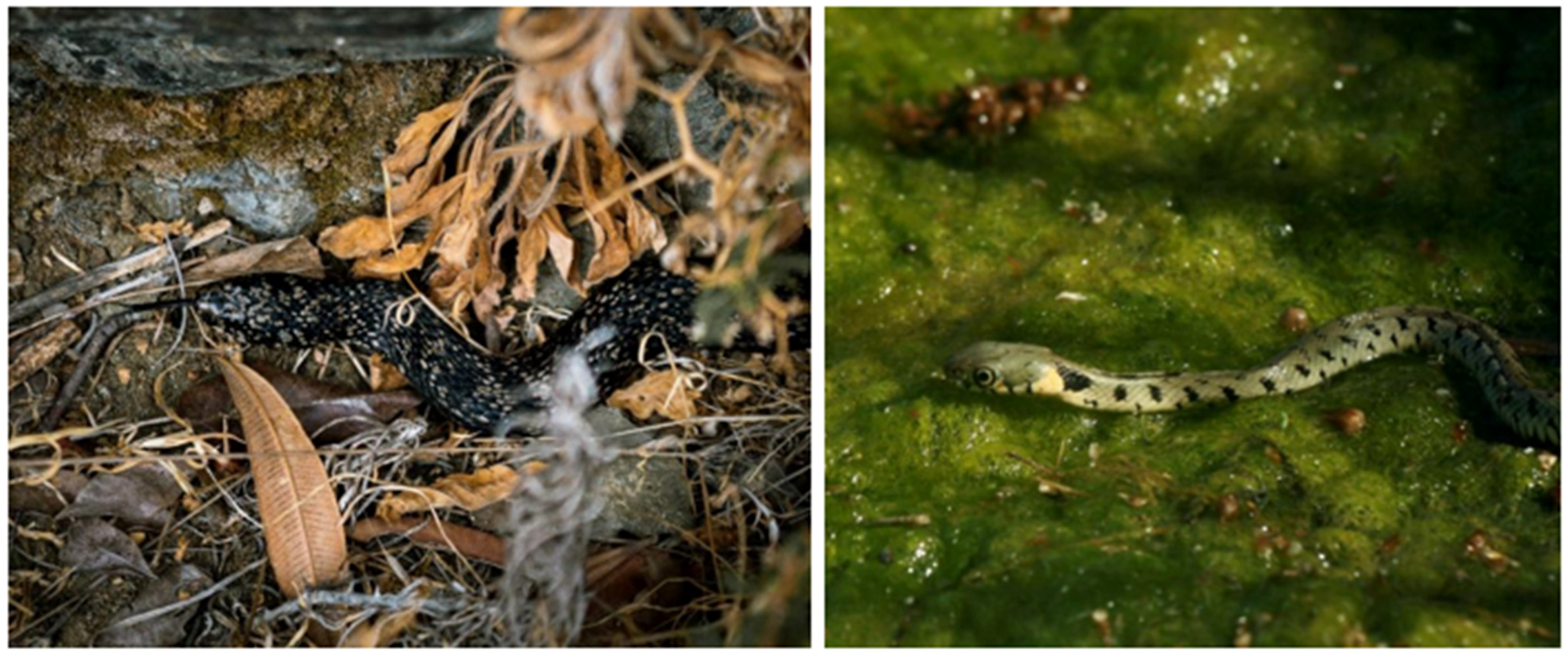
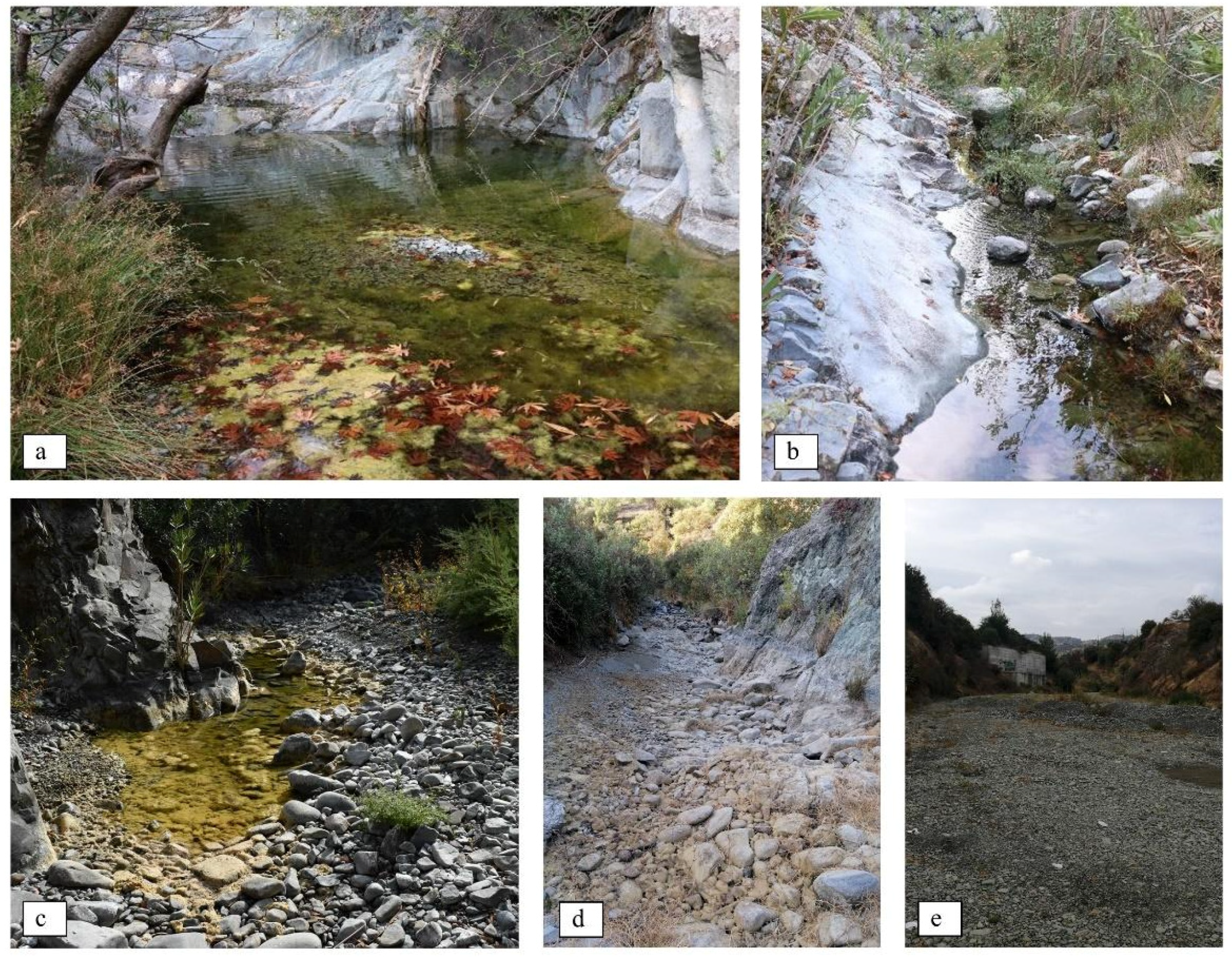
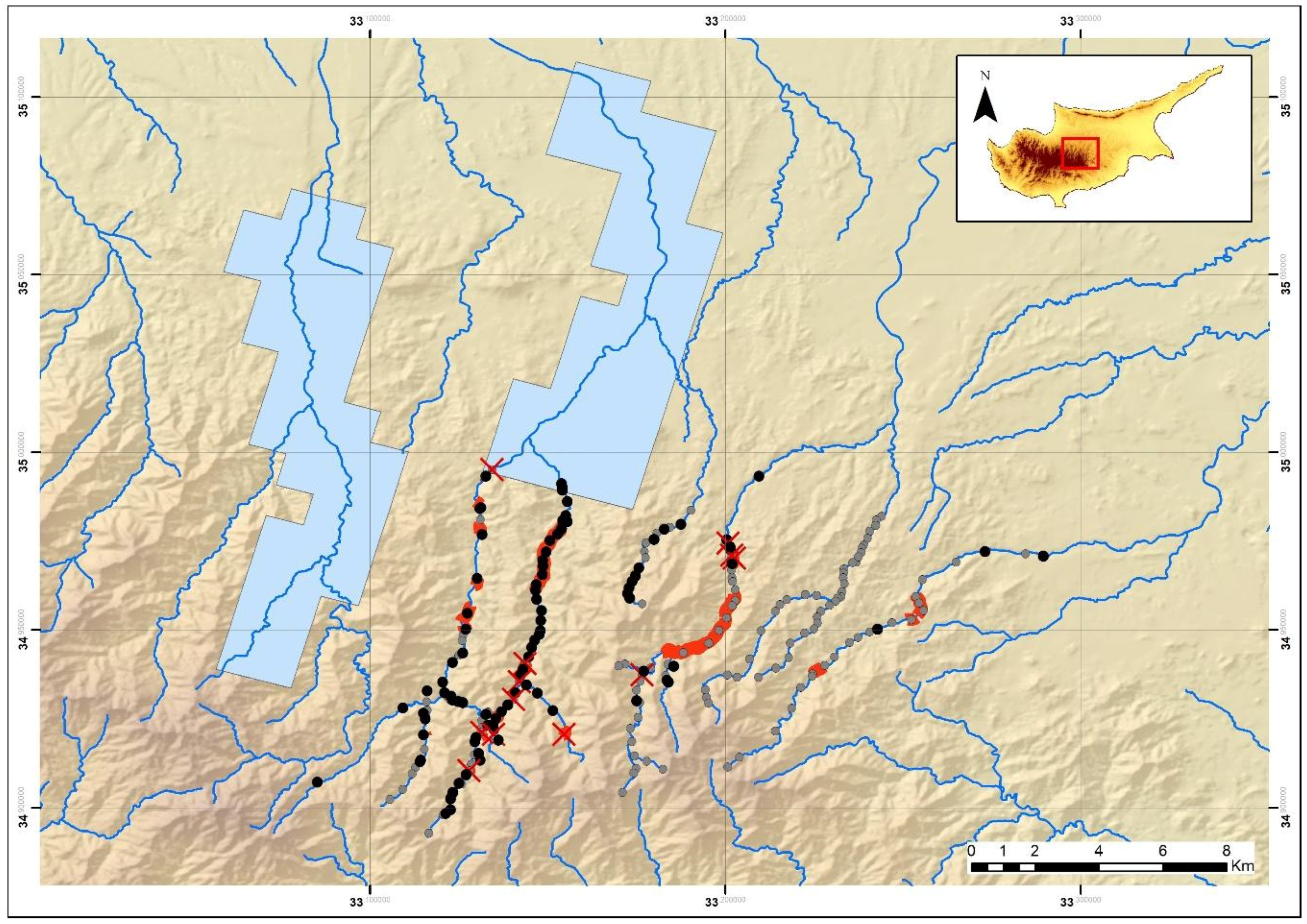

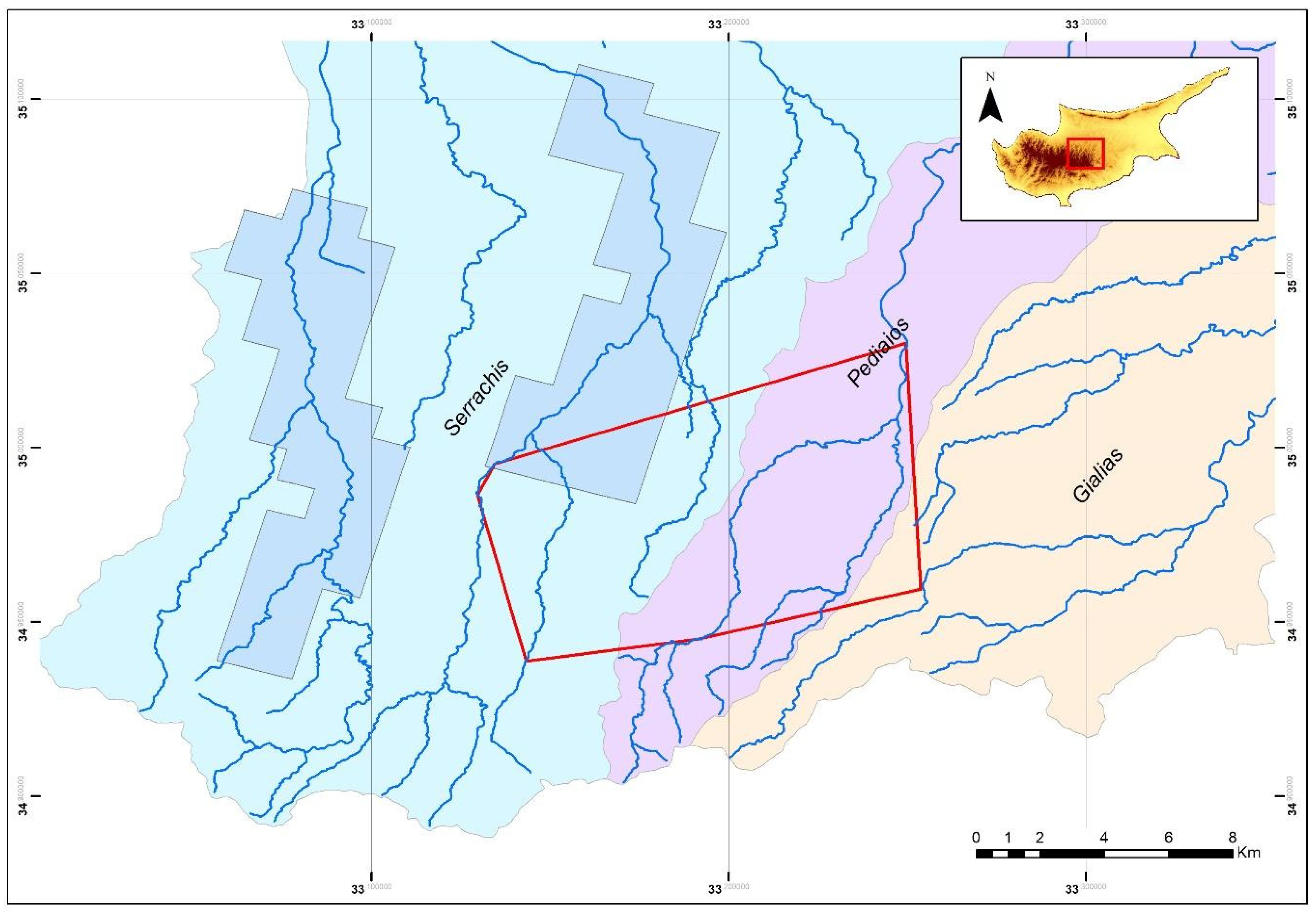
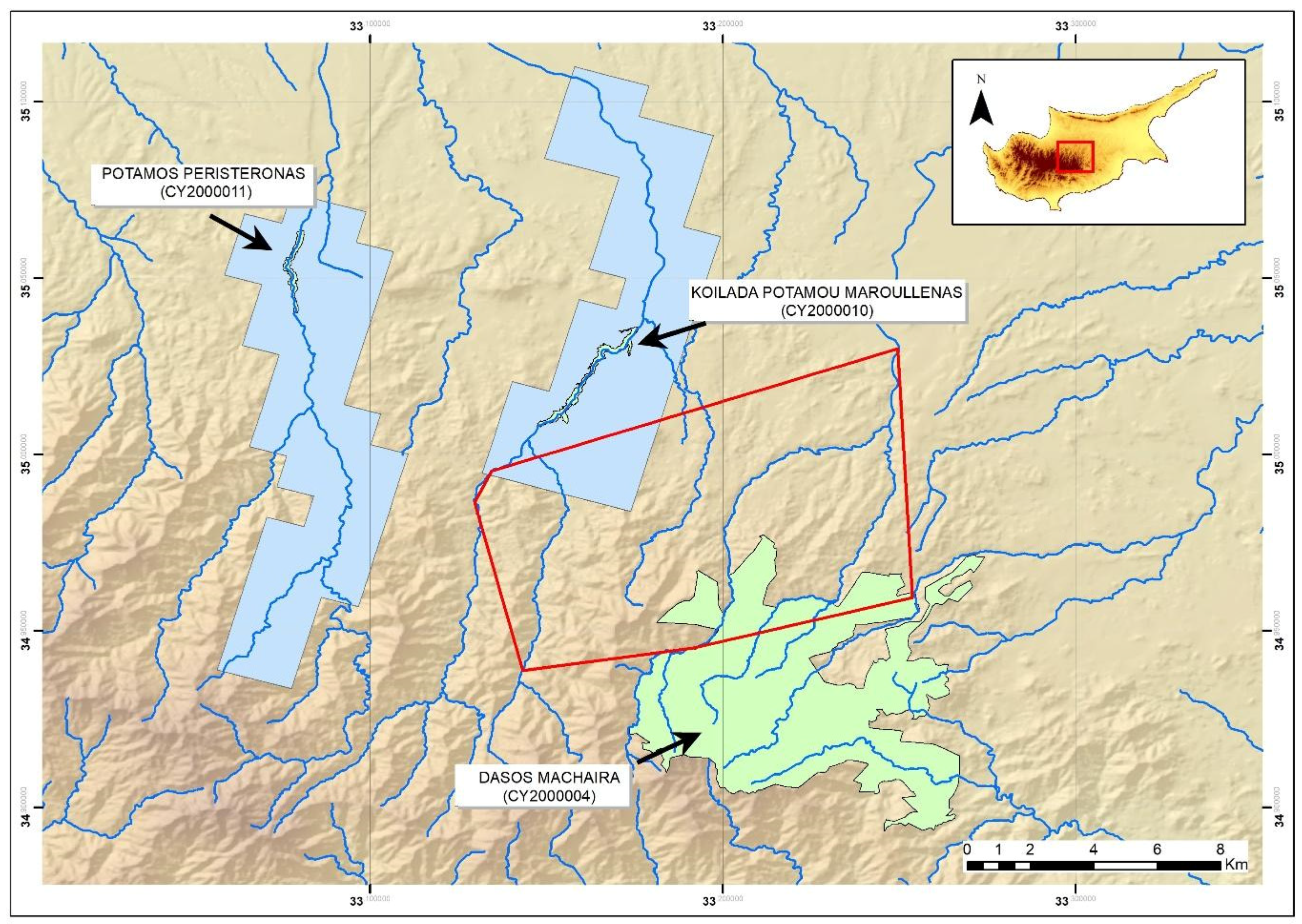
| Parameters of Conservation Status | Reporting Period | ||
|---|---|---|---|
| 2001–2006 | 2007–2012 | 2013–2018 | |
| Range | U1 | U1 | U1 |
| Surface area (km2) | 26 | 26.25 | 97 |
| Population | U2 | U1 | U2 |
| Area covered by population (km2) | - | 26.25 | 97 |
| Area of population within Natura 2000 areas (km2) | - | 11.75 | 26 |
| Short-term trend | Decreasing | Unknown | Unknown |
| Habitat for the species | XX | FV | FV |
| Future prospects | U1 | FV | XX |
| Overall assessment of conservation status | U2 | U1 | U2 |
| Code | Source | Date | Locality | Morph | Age Group |
|---|---|---|---|---|---|
| MM01 | PF | 6 November 2020 | Moni Machaira | Normal | Young |
| MM02 | PF | 6 November 2020 | Moni Machaira | Normal | Young |
| GR01 | PF | 6 November 2020 | Gouri | Melanistic | Adult |
| GR02 | PF | 6 November 2020 | Gouri | Picturata | Adult |
| GR03 | PF | 6 November 2020 | Gouri | Skin shed | Adult |
| MM03 | PF | 6 November 2020 | Moni Machaira | Skin shed | Young |
| MM04 | PF | 6 November 2020 | Moni Machaira | Skin shed | Young |
| LY01 | PF | 12 October 2020 | Lythrodonta | Normal | Young |
| AE01 | PF | 15 October 2020 | Agios Epifaneios | Melanistic | Adult |
| AE02 | PF | 15 October 2020 | Agios Epifaneios | Skin shed | Adult |
| AP01 | CS | 9 June 2020 | Farmakas Quarry | Normal | Adult |
| TS01 | CS | 4 July 2020 | Filani lake | Picturata | Adult |
| CK01 | CS | 3 January 2021 | Pera Orinis | Normal | Young |
Publisher’s Note: MDPI stays neutral with regard to jurisdictional claims in published maps and institutional affiliations. |
© 2021 by the authors. Licensee MDPI, Basel, Switzerland. This article is an open access article distributed under the terms and conditions of the Creative Commons Attribution (CC BY) license (https://creativecommons.org/licenses/by/4.0/).
Share and Cite
Zotos, S.; Stamatiou, M.; Naziri, A.; Meletiou, S.; Demosthenous, S.; Perikleous, K.; Erotokritou, E.; Xenophontos, M.; Zavrou, D.; Michael, K.; et al. New Evidence on the Distribution of the Highly Endangered Natrix natrix cypriaca and Implications for Its Conservation. Animals 2021, 11, 1077. https://doi.org/10.3390/ani11041077
Zotos S, Stamatiou M, Naziri A, Meletiou S, Demosthenous S, Perikleous K, Erotokritou E, Xenophontos M, Zavrou D, Michael K, et al. New Evidence on the Distribution of the Highly Endangered Natrix natrix cypriaca and Implications for Its Conservation. Animals. 2021; 11(4):1077. https://doi.org/10.3390/ani11041077
Chicago/Turabian StyleZotos, Savvas, Marilena Stamatiou, Andrea Naziri, Sotiris Meletiou, Stalo Demosthenous, Konstantinos Perikleous, Elena Erotokritou, Marina Xenophontos, Despo Zavrou, Kyriaki Michael, and et al. 2021. "New Evidence on the Distribution of the Highly Endangered Natrix natrix cypriaca and Implications for Its Conservation" Animals 11, no. 4: 1077. https://doi.org/10.3390/ani11041077
APA StyleZotos, S., Stamatiou, M., Naziri, A., Meletiou, S., Demosthenous, S., Perikleous, K., Erotokritou, E., Xenophontos, M., Zavrou, D., Michael, K., & Sergides, L. (2021). New Evidence on the Distribution of the Highly Endangered Natrix natrix cypriaca and Implications for Its Conservation. Animals, 11(4), 1077. https://doi.org/10.3390/ani11041077







